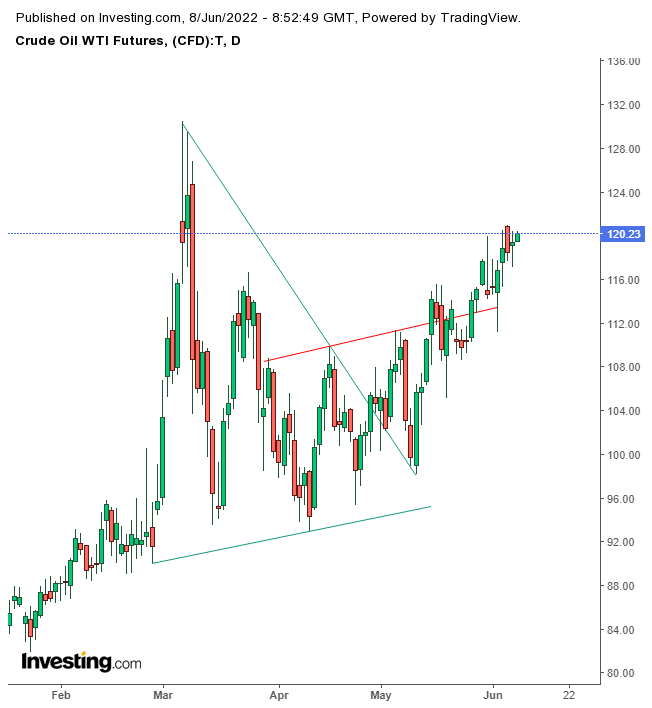- Recession concerns escalate
- ECB rate hike likely
- Global bonds sell off
- On Friday, Chinese CPI data is released.
- US initial jobless claims are published on Thursday.
- Canadian employment figures are printed on Friday.
- The MSCI Asia Pacific Index rose 1%
- The MSCI Emerging Markets Index rose 1.3%
- The euro rose 0.2% to $1.0720
- The Japanese yen rose 1% to 133.99 per dollar
- The British pound fell 0.4% to $1.2537
- Brent crude rose 1.1% to $122.01 a barrel
- Spot gold fell 0.3% to $1,847.07 an ounce
Key Events
US futures on the Dow Jones, S&P 500, NASDAQ 100, and Russell 2000 edged lower on Wednesday and European stocks extended a decline on continued worries that a recession is likely even as angst on inflation and tightening monetary policy continues.
Oil keeps moving higher.
Global Financial Affairs
Though all US contracts were sold off, futures on the Russell 2000 underperformed. It is interesting to note that contracts on the NASDAQ 100 didn't drop any more than those on S&P 500 or the Dow.
Tech futures and stocks tracked Chinese tech giants Tencent (HK:0700) and Alibaba (HK:9988) which rallied in Hong Kong on speculation that Beijing will end its regulatory crackdown on the technology sector.
In Europe, the STOXX 600 Index initially advanced this morning but the rally petered out, reversing into a decline after Credit Suisse (SIX:CSGN) warned of a second quarter loss, driving the STOXX 600 Banks down 0.7%.
Rising oil prices lifted energy stocks, capping losses for the European index. Retailers also outperformed after Zara's owner Inditex (BME:ITX) surged 4.1% after showing an 80% increase in net profit for the February-April period.
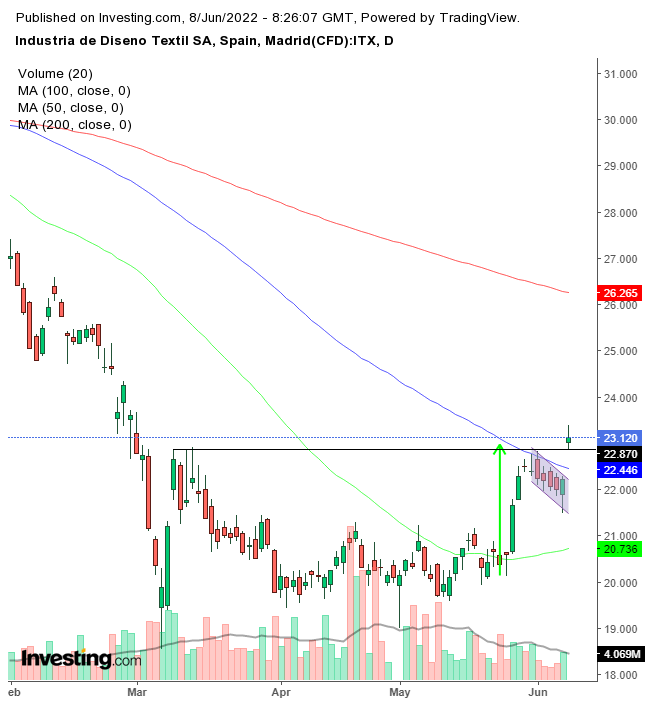
ITX completed a bullish flag that may have helped the stock bottom out, bouncing off the March 2020 lows.
Earlier Wednesday, Asian stocks advanced with the Chinese tech rally. New approvals for an array of video games increased optimism that regulators are prepared to ease the recent crackdown on internet companies. Still, the regional tech index closed off intraday highs, demonstrating bearish resistance.
Hong Kong's Hang Seng blew past the competition, surging 2.22%, more than three times the gains of China's Shanghai Composite, the second-best performer in the region.
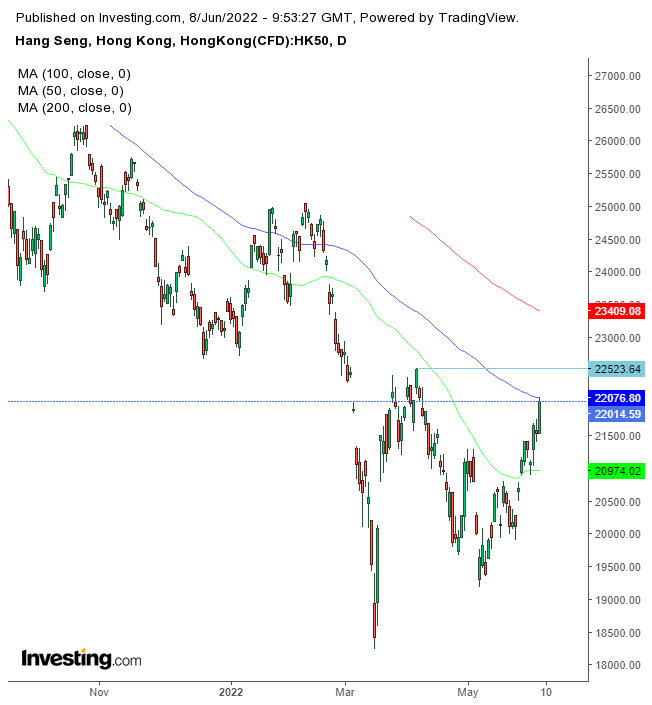
The index reached its highest level since Apr. 6. If it registers higher than its Apr. 4 high, it will have posted the second ascending peak required to establish an uptrend.
Yesterday, US stocks climbed for the second day, with the S&P 500 Index wiping out all of last week's losses.
Consumer discretionary was the only sector in the red, on Tuesday, falling 0.25% after US discount retailer, Target (NYSE:TGT) reduced its profit outlook for the second time in three weeks due to inventory surplus. The Energy sector surged 3%, rising far ahead of the second-best gainer Healthcare, +1.3%.
Advances for shares of Apple (NASDAQ:AAPL) and Microsoft (NASDAQ:MSFT) pulled the NASDAQ 100 higher, offsetting a selloff of Amazon (NASDAQ:AMZN).
Investors remain worried that the Fed will be forced to continue its aggressive monetary tightening policy and swiftly rising interest rates combined with a sharply reduced money supply will trigger a recession.
The market will be closely watching Friday's US CPI release for clues on how aggressively the Fed will continue its interest rate policy after hiking rates by 50 basis points at its last meeting. That was the biggest hike since 2000.
Meanwhile, some traders are speculating that the ECB might hike rates more assertively this year starting with a hike at tomorrow's meeting in order to rein in inflation in the Eurozone.
Treasury yields on the 10-year note rebounded, along with global sovereign bond yields, after yesterday's fall. Investors are selling off bonds in anticipation of higher yields as rates move higher.
The dollar climbed to the highest since May 20 but still found resistance.
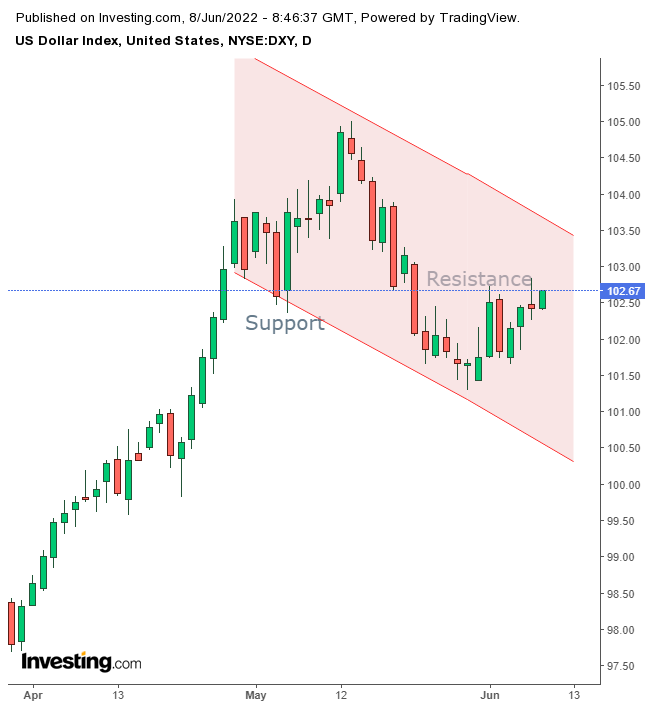
The greenback has been churning at the same levels, which could keep the USD within a Falling Channel. On the other hand, if it overcomes this level, it may return to its previous long-term uptrend.
Gold was little changed, having been ranging since the May 24 high.
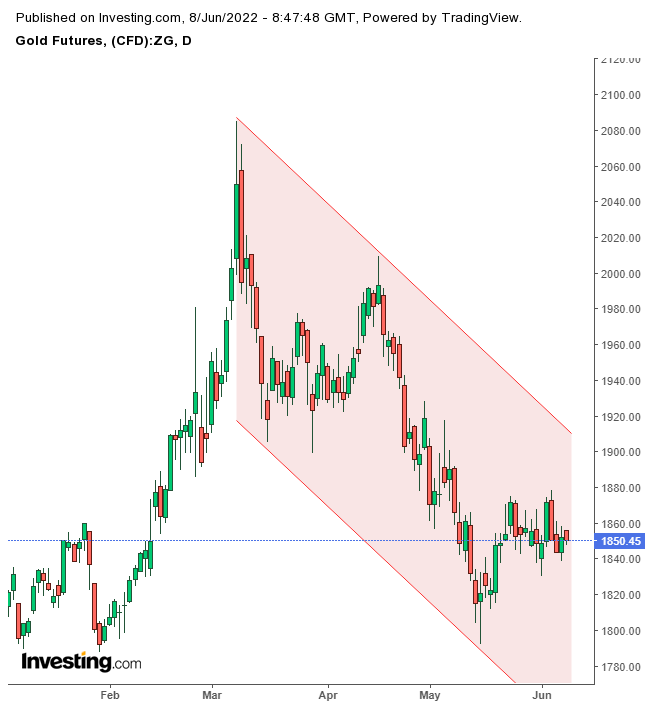
The yellow metal is trading within a Falling Channel.
Bitcoin dropped for the second day within a bearish pattern.
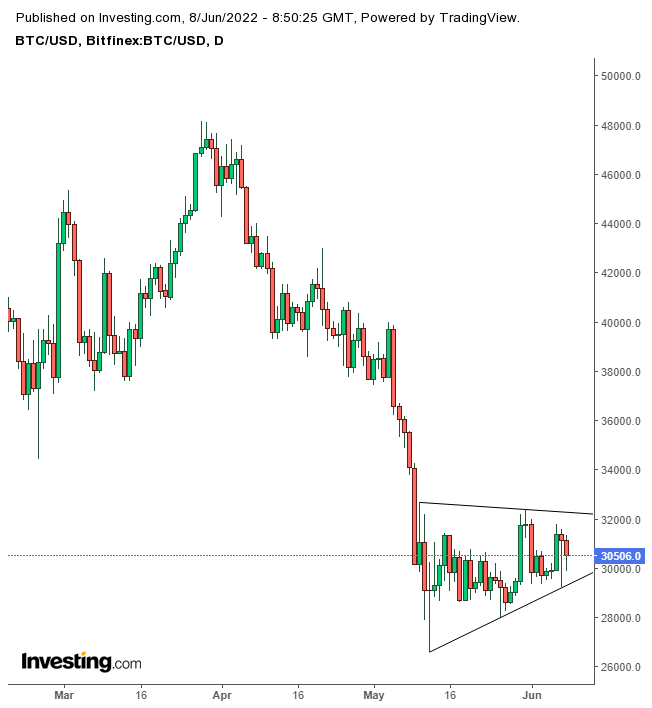
The digital token has been trading within a pennant, which probably will turn into a Symmetrical Triangle. A downside breakout would likely cause another leg down, which could trigger a collapse in the space.
Oil climbed to the highest level since Mar. 8, after completing two bullish patterns.
